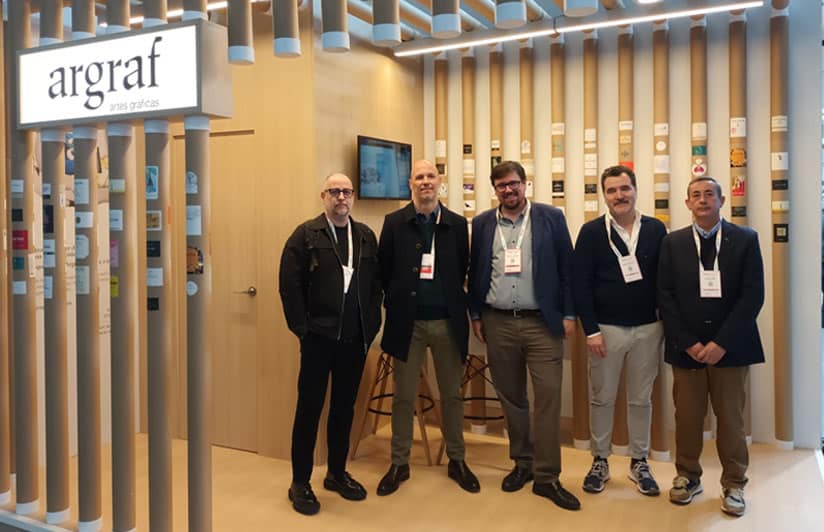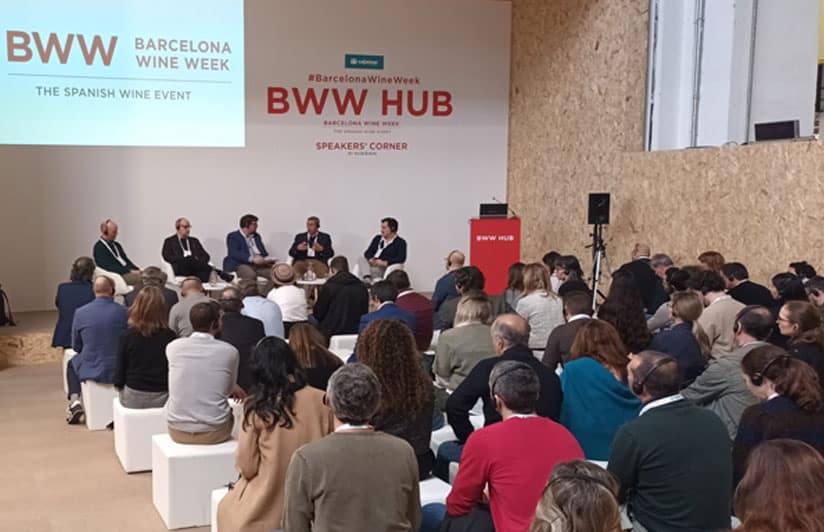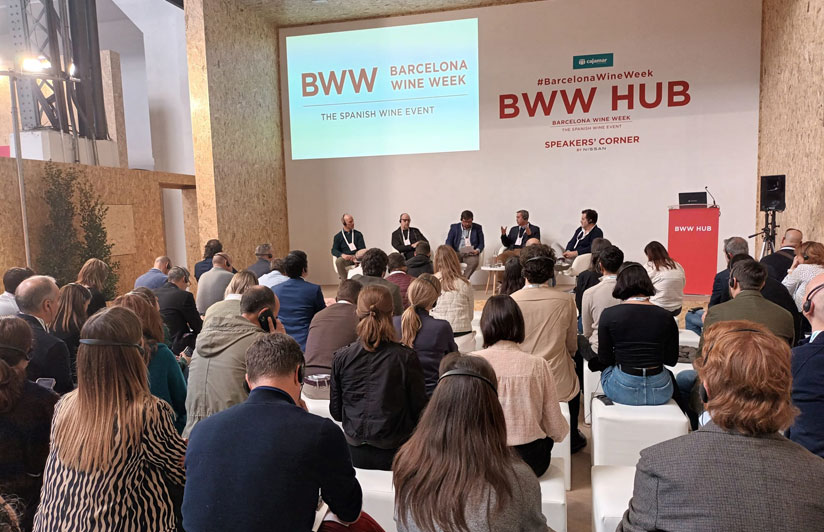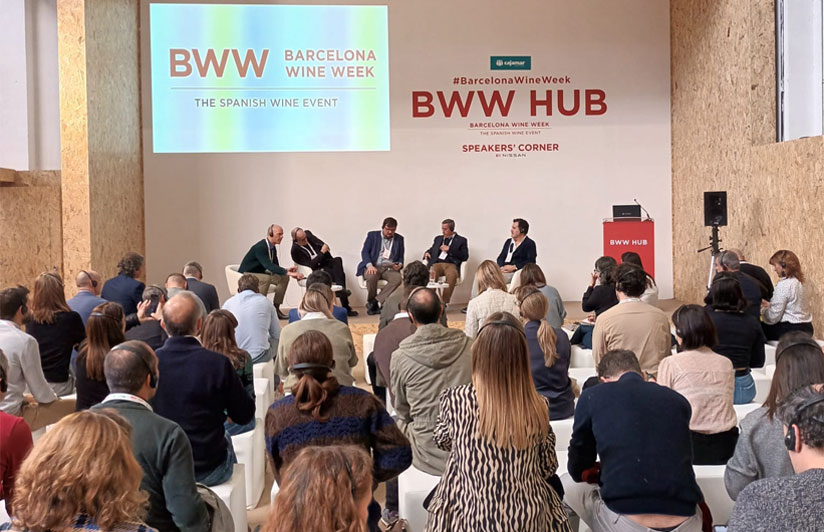The round table “No limits to innovation: this is what the wine labels of the future will be like“, organised by Grupo Argraf as part of Barcelona Wine Week, brought together five leading professionals from the world of labelling, whose reflections were followed attentively by a large group of attendees.

The meeting was moderated by Miguel Ángel Torroba, Managing Director of Argraf Catalonia, who was accompanied by leading design figures such as Carles Anadón (Project Director at Seriesnemo) and Miquel Capo (Co-Director and Creative Director at Bas-Capo), as well as experts in stationery and printing materials such as Miguel García (Avery Dennison) and Cristian Sillero (Comercial Arqué).

The round table began with a reflection on the importance of labels in the brand image of wines, their role in the purchasing decision and their ability to tell stories, provoke and transmit the personality of the brand behind them. They immediately got down to business, helping the audience to glimpse the advances that sectors such as cosmetics are already implementing and which in a few years’ time will become commonplace in the labelling of drinks, and more specifically, wines. In this sense, the designers gave a little ‘slap on the wrist’ to the wine sector, which in general adopts a conservative stance and is usually one of the last to embrace emerging trends, in contrast to other sectors, such as cosmetics, which stand as ‘early adopters’ in terms of packaging.

Sustainability emerged as one of the most important trends in the choice of materials. Miguel García highlighted the importance of having sustainable, reusable and recyclable materials, while Cristian Sillero pointed out that this is the main challenge in addition to printing in new materials such as wood or velvet. In this sense, there is a clear preference for the use of hemp, cotton and sugar cane labels, which have shorter and more environmentally friendly production cycles, and for labels that can be removed without leaving a mark, which facilitate the reuse of the bottles.
The designers took the opportunity to explain what advances they would like to incorporate into their designs. Carles Anadón expressed his desire to experiment with papers capable of adapting to the curves of the bottles, so that they can be placed anywhere on the bottle, eliminating obstacles to creativity. He also noted his interest in having industrial papers with the appearance of being handmade, which is a luxury trend that is already being implemented in Japan with very satisfactory results.

Miquel Capo, for his part, emphasised the slow evolution of wine labelling, and the importance of design as the main resource for making a difference. In this sense, the conversation also explored other possibilities, such as labels whose image changes completely when they get wet or change temperature, “as if you were switching screens”. Moreover, the designers revealed that logos capable of encrypting information are already in the works and will replace unsightly QR codes in the future. A world of possibilities in which specific content for smart glasses is also present.
An activity full of interesting contributions whose conversations were continued at Grupo Argraf’s stand at Barcelona Wine Week. A meeting place where new projects always emerge, which will undoubtedly continue to mark the path of innovation in packaging and labelling.
